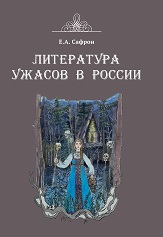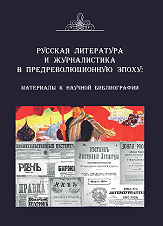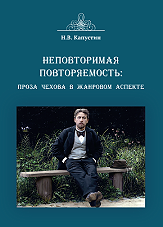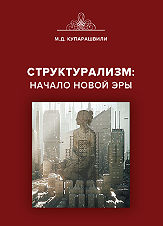Kuzmina Marina D.,
Candidate of Philology, Associate Professor
Higher School of Printing and Media Technologies
St. Petersburg State University of Industrial Technologies and Design;
Institute of Philosophy and Law of the Siberian Branch of the Russian Academy of Sciences
e-mail: mdkuzmina@mail.ru
The correspondence of A.I. Herzen and his cousin-bride N.A. Zakharyina in 1835–1838, which has repeatedly attracted the attention of researchers, is, as is generally recognized, of literary value. It is curious that its participants themselves conceptualized it in the categories of literary genres, understanding it as a poem, a song, and finally, a novel in letters similar to, or rather, much better than, a novel in the letters of Rousseau. In contrast to his sentimental work, they created their own romantic one. This was, as L.Ya. Ginzburg rightly noted, an example of romantic life-creativity. It continued and at the same time ended in 1839. The letters of 1839 represent a kind of epilogue to a romantic epistolary novel. They were already created by the spouses A.I. and N.A. Herzen and the parents of their little son, who separated briefly several times and had difficulty enduring the separation (the young husband went to Moscow and St. Petersburg on business, leaving his wife and baby in Vladimir). These letters are all the more interesting because they have never been the subject of special research. Their authors, on the one hand, continue to develop the themes, motives and images of their premarital epistolary novel, on the other hand, quite serious changes are gradually taking place under the pens of both. Both he and she correct the motive of the inseparability of two, emphasizing and trying to understand that there are not only two, but also three, because a child was born. Inseparability, as Natalya Aleksandrovna realizes, has become more multifaceted since the beginning of family life — and at the same time, in a situation of separation, it is not possible to preserve it fully, as it seemed possible in the premarital period (when one had to be content with little, and this little satisfied and pleased). Finally, with the beginning of the family period, both in the life and in the letters of the wife, mother and mistress of the house, the theme of everyday life enters as an integral component, previously fundamentally alien to her, thought of as belonging to the “crowd”. Accordingly, both the content and style of the letters are being rethought. Even more dramatic changes occur under the pen of Herzen, who arrived in the Northern capital for the first time and was captured by new impressions. His St. Petersburg letters are included in a single epistolary text along with Natalya Alexandrovna’s letters, and at the same time, they constitute an independent travel text within it, with its own plot, system of motives and images, with its own style. Herzen’s letters of 1839 are organically included in the St. Petersburg text of Russian literature and, along with the works of Pushkin and Gogol, stand at its origins.
Keywords: A.I. Herzen, N.A. Herzen (Zakharyina), letters 1839, correspondence, epistolary novel, romantic novel in letters, Petersburg, Petersburg letters
References
1. Ginzburg L.Ya. Avtobiograficheskoe v tvorchestve Gertsena // Literaturnoe nasledstvo. Gertsen i Ogarev v krugu rodnykh i druzei. Kn. 1. Moscow: Nauka, 1997. S. 7–54.
2. Savkina I.L. Razgovory s zerkalom i Zazerkal’em: Avtodokumental’nye zhenskie teksty v russkoi literature pervoi poloviny XIX veka. Moscow: Novoe literaturnoe obozrenie, 2007. 416 s.
3. Sozina E.K. Soznanie i pis’mo v russkoi literature. Ekaterinburg: Izd-vo Ural’skogo un-ta, 2001. 552 s.
4.Vinogradova A.E. Pis’ma N.A. Zakhar’inoi k A.I. Gertsenu 1835 goda: k predystorii semeinoi dramy // Vestnik Tverskogo gos. un-ta. Seriia: Filologiia. 2010. Vyp. 5. S. 166–169.
5. Gorbunova A.N. Evoliutsiia zhenskogo ideala v tvorchestve Gertsena (1830–1850-e gg.) // Vestnik Sankt-Peterburgskogo gos. un-ta tekhnologii i dizaina. Ser. 2. Iskusstvovedenie. Filologicheskie nauki. 2018. Vyp. 3. S. 105–112.
6. Gertsen A.I. Sobr. soch.: v 30t. Moscow: Izd-vo AN SSSR, 1961. T. 21. 639 s.; T. 22. 481 s.
7. Gertsen A.I. Soch.: v 7 t. T. 7: Perepiska s N.A. Zakhar’inoi. St. Petersburg: Izdanie F. Pavlenkova, 1905. 649 s.
8. Iz Vladimirskoi zhizni Gertsenov. Pis’ma muzha i zheny / publ. E.S. Nekrasovoi) // Bratskaia pomoshch’ postradavshim v Turtsii armianam. Moscow, 1897. S. 68–102.
9. Karpov A.A. «Afanasii i Pul’kheriia» — povest’ o liubvi i smerti // Fenomen Gogolia: materialy Iubileinoi mezhdunar. nauch. konf., posviashchennoi 200-letiiu so dnia rozhdeniia N.V. Gogolia. St. Petersburg: Petropolis, 2011. S. 151–165.
10. Pushkin A.S. Poln. sobr. soch.: v 16 t. Moscow; Leningrad: Izd-vo AN SSSR, 1948. T. 15. 391 s.
11. Levkovich Ya.L. Avtobiograficheskaia proza i pis’ma A.S. Pushkina. Leningrad: Nauka, 1988. 328 s.
12. Levkovich Ya.L. Pis’ma Pushkina k zhene // Pis’ma A.S. Pushkina k zhene / sost., stat’ia i komment. Ya.L. Levkovich. St. Petersburg: Izd-vo «Pushkinskogo fonda», 2019. S. 109–128.
13. Mann Yu.V. Poetika Gogolia // Mann Yu.V. Tvorchestvo Gogolia: smysl i forma. St. Petersburg: Izd-vo SPbGU, 2007. S. 7–352.
14. Rumanovskaia E.L. Peterburg glazami A.I. Gertsena // Pechat’ i slovo Peterburga (Peterburgskie chteniia – 2007): sb. nauch. tr. St. Petersburg: SPbGUTD, 2008. S. 306–314.
15. Toporov V.N. Peterburg i «Peterburgskii tekst russkoi literatury» // Toporov V.N. Peterburgskii tekst russkoi literatury: Izbrannye trudy.: Iskusstvo-SPb, 2003. S. 7–118.





.png)







